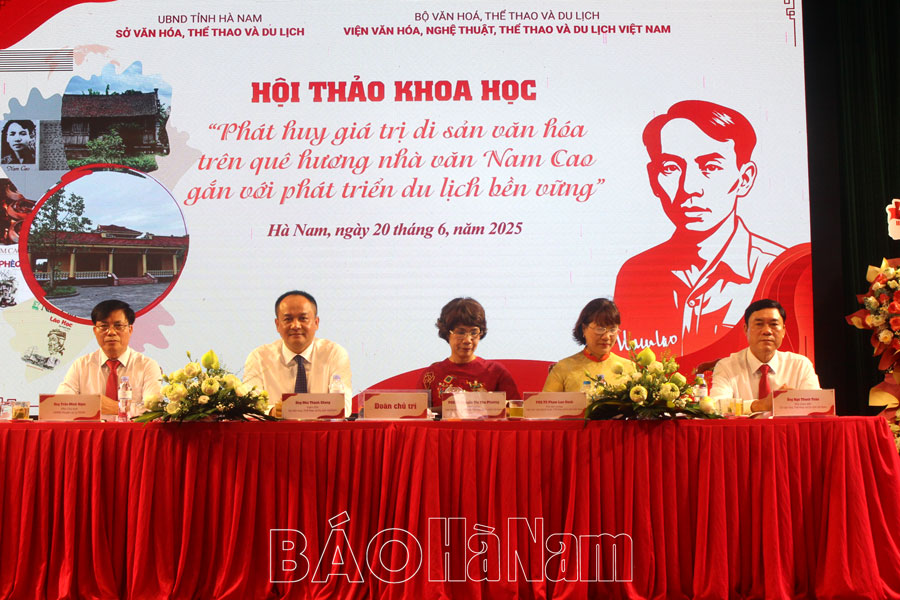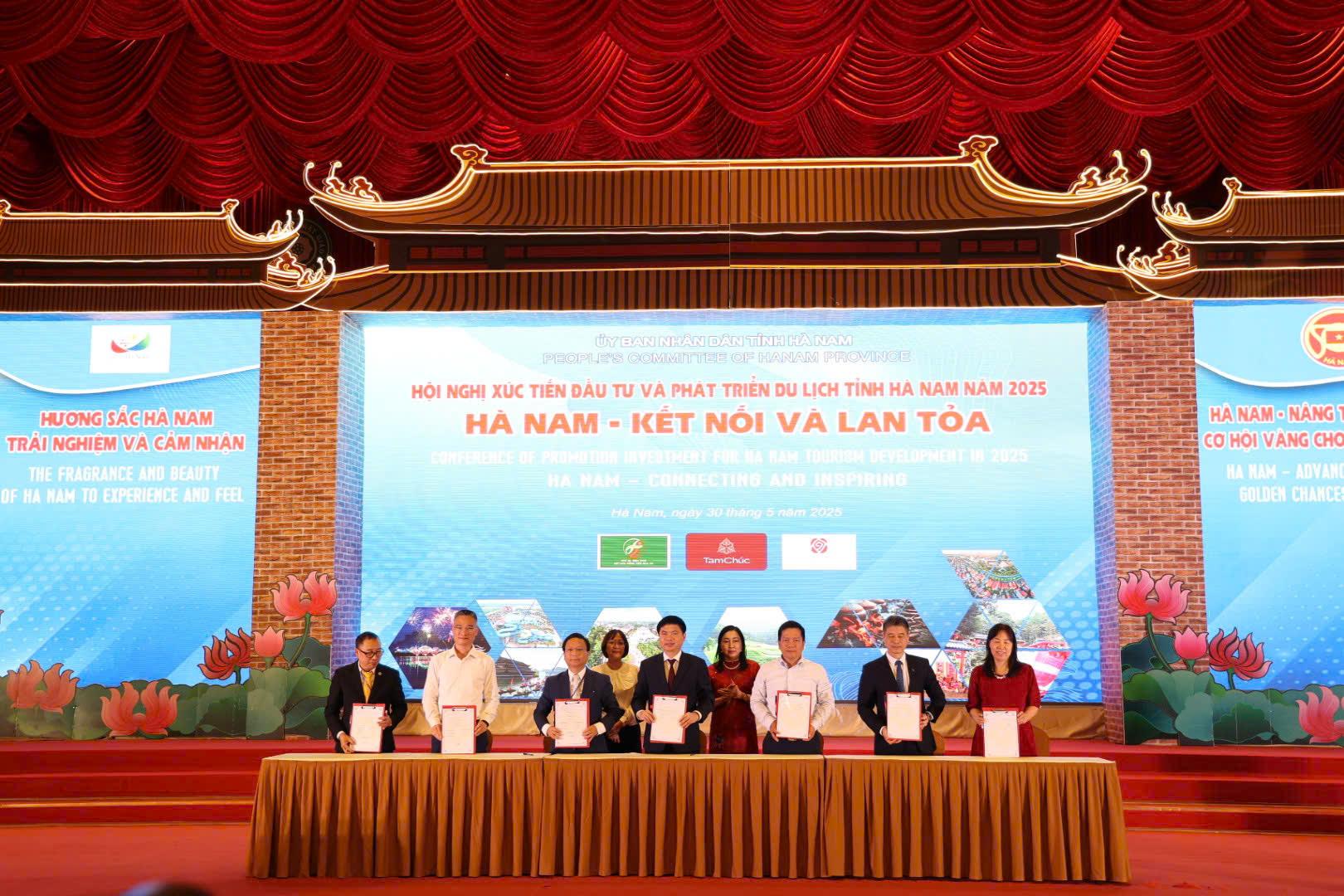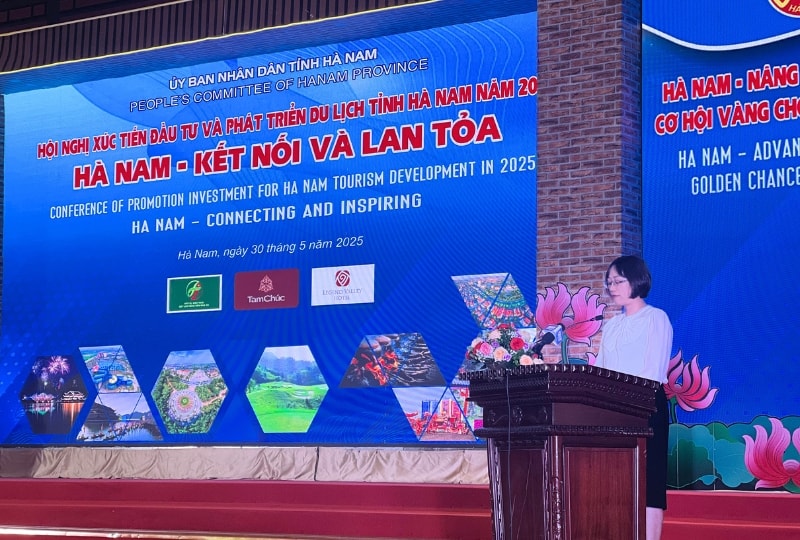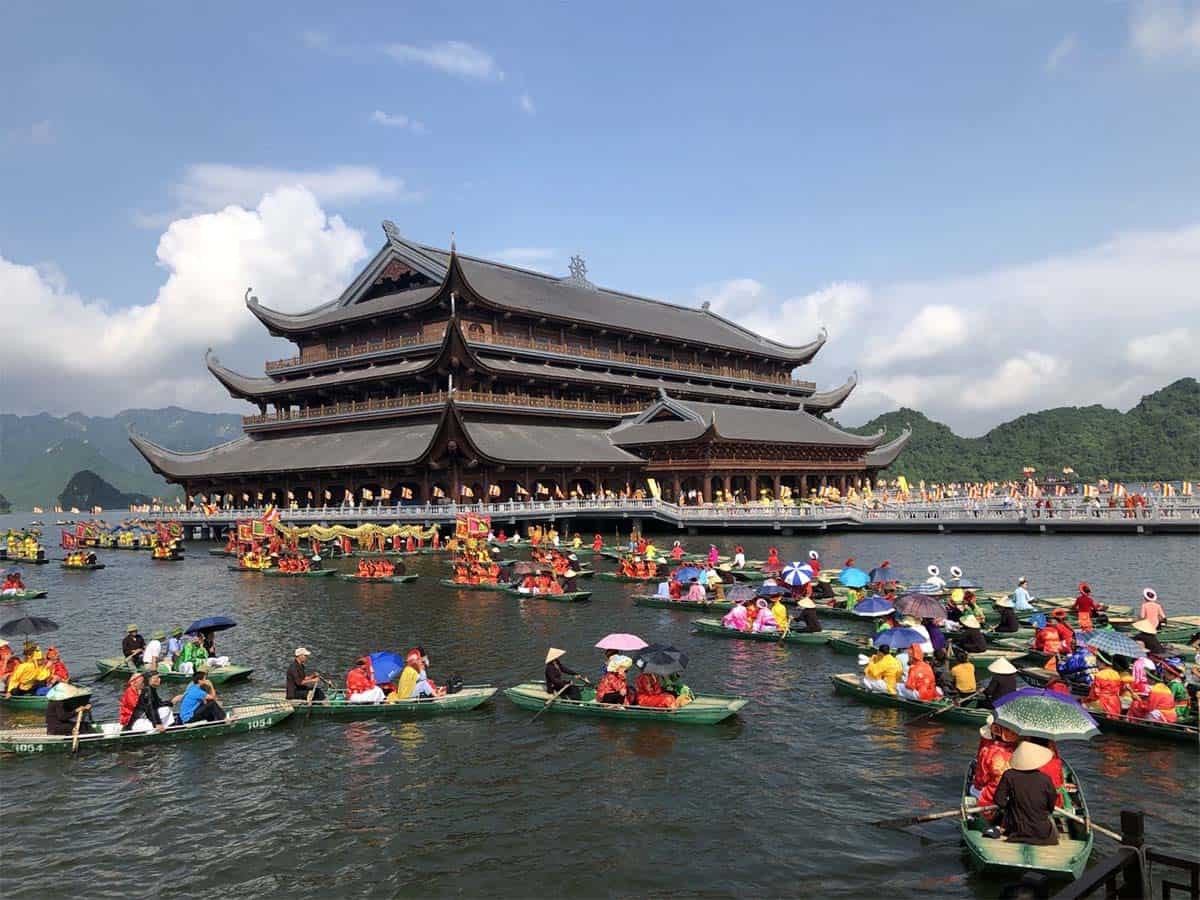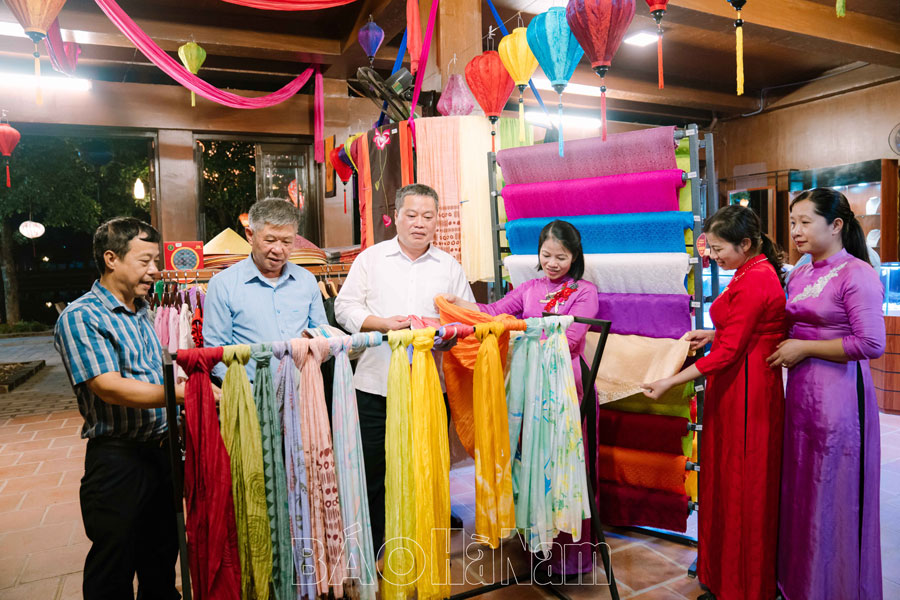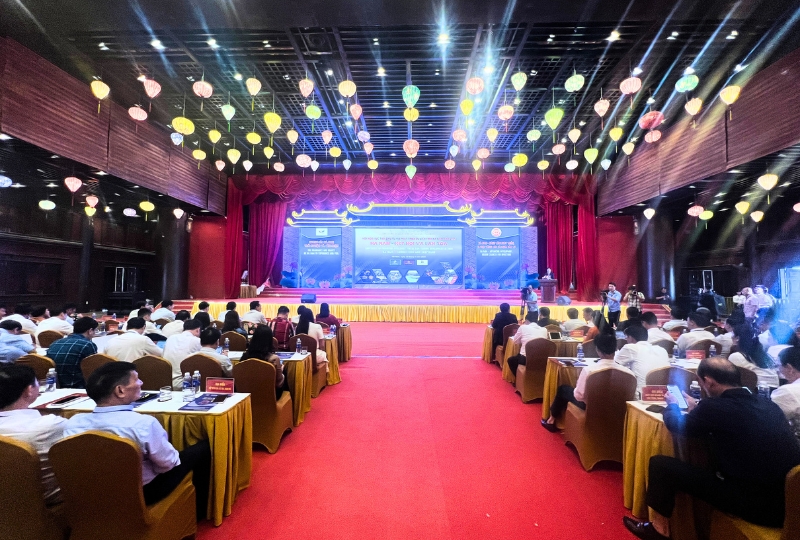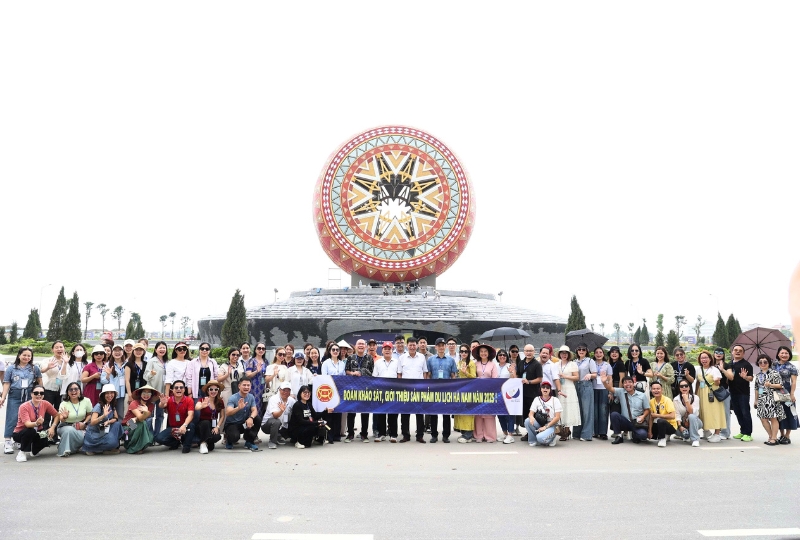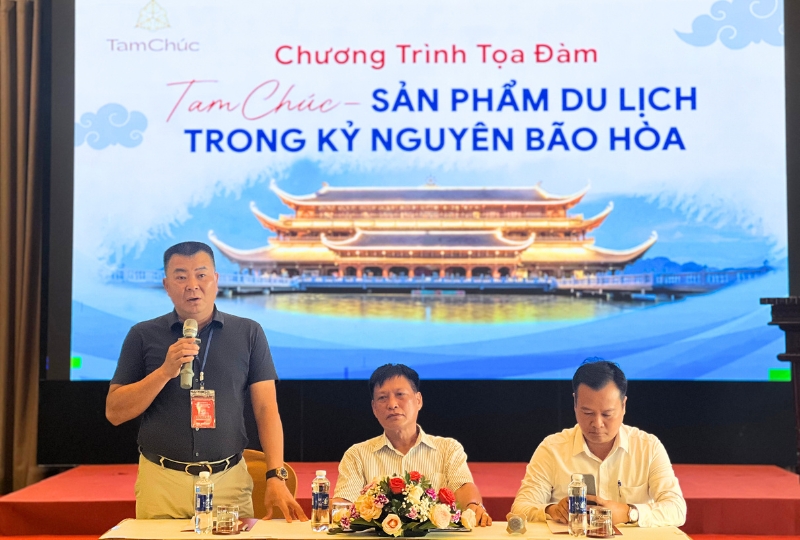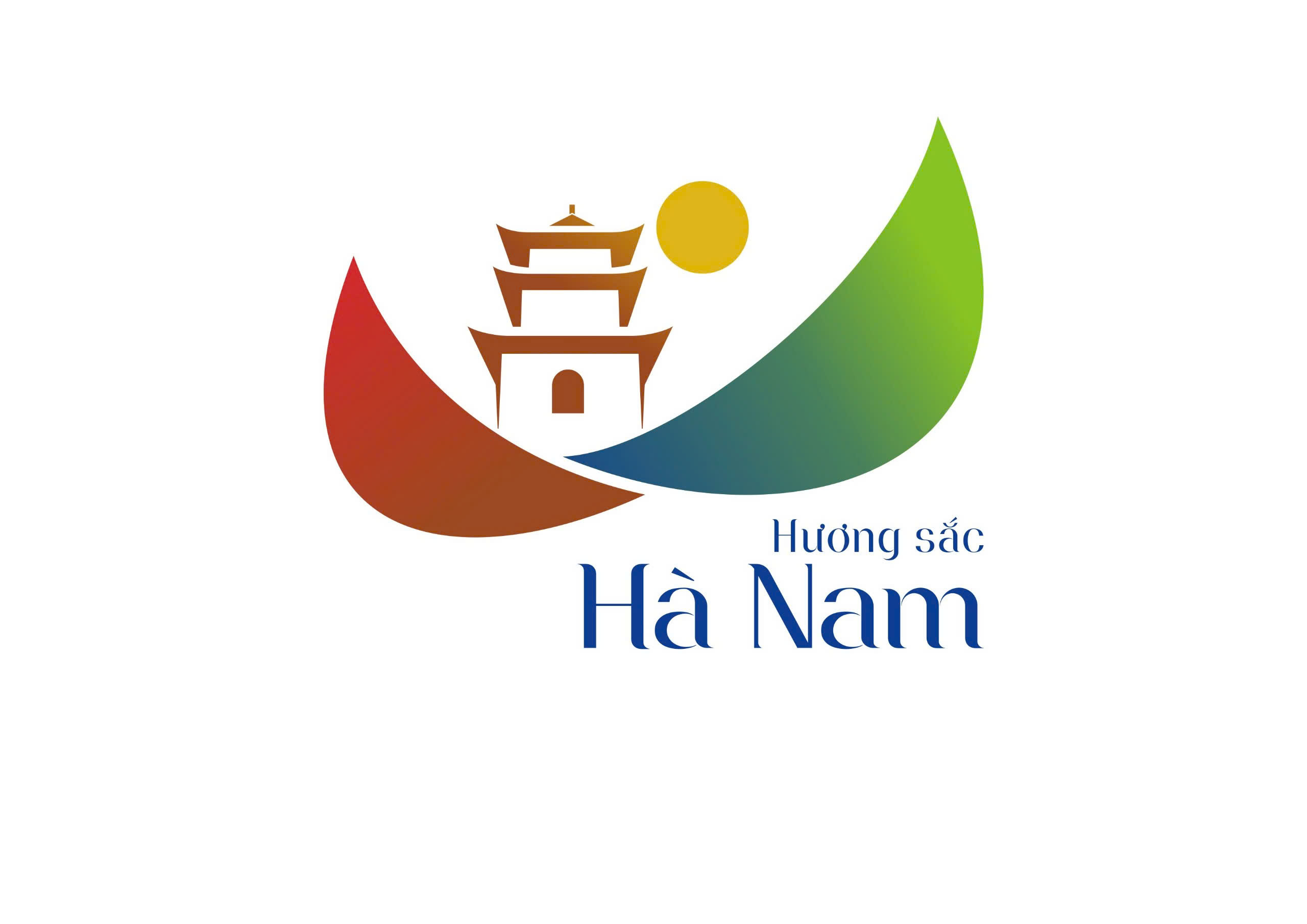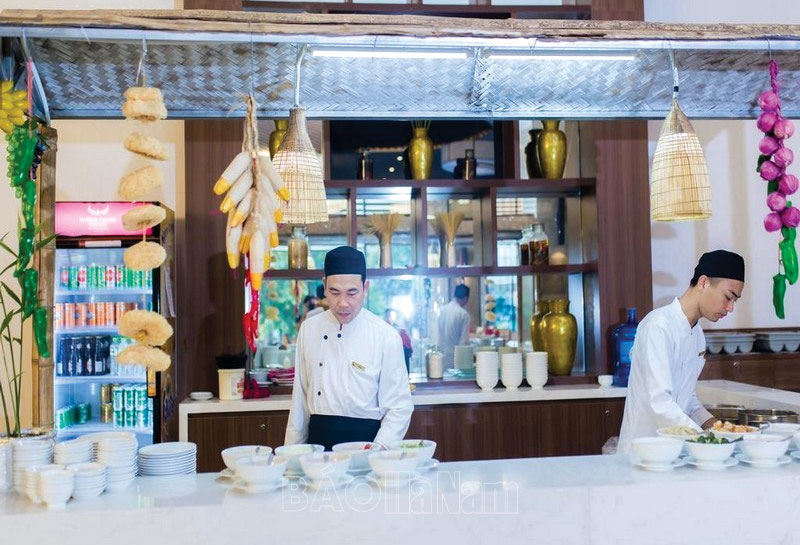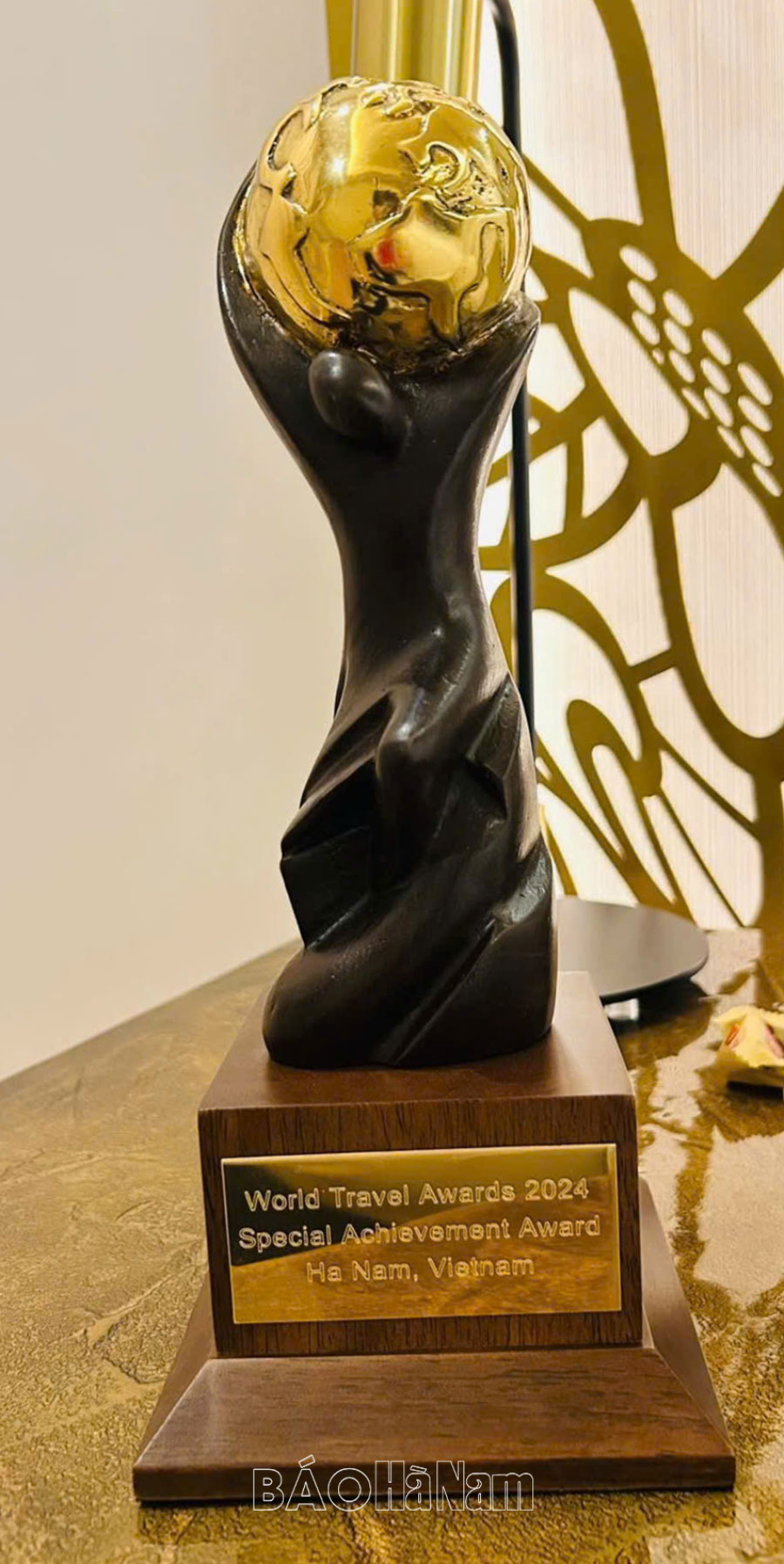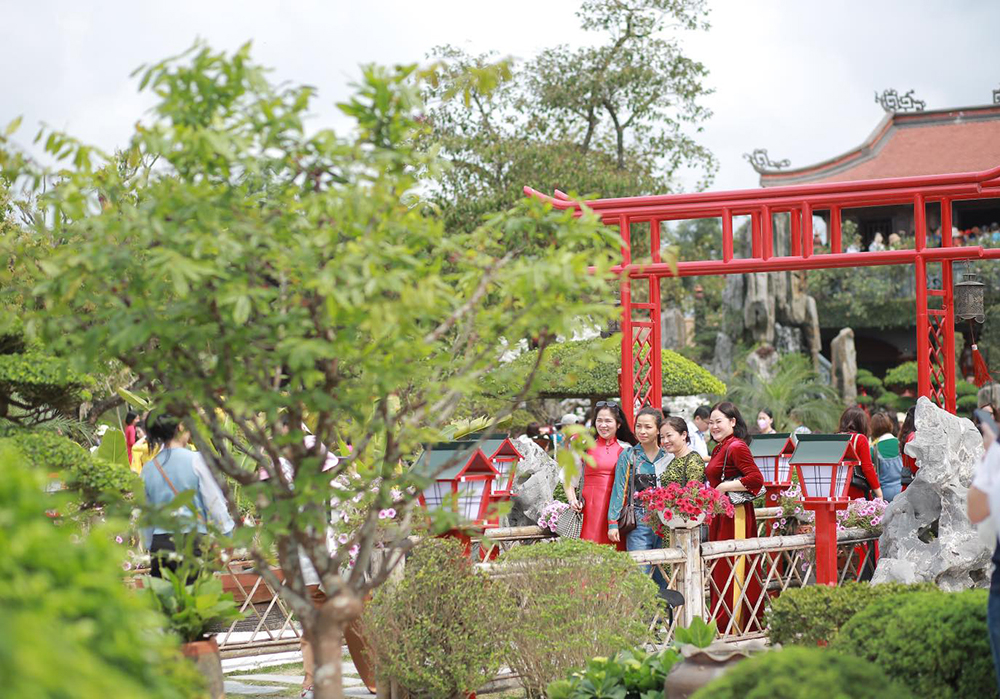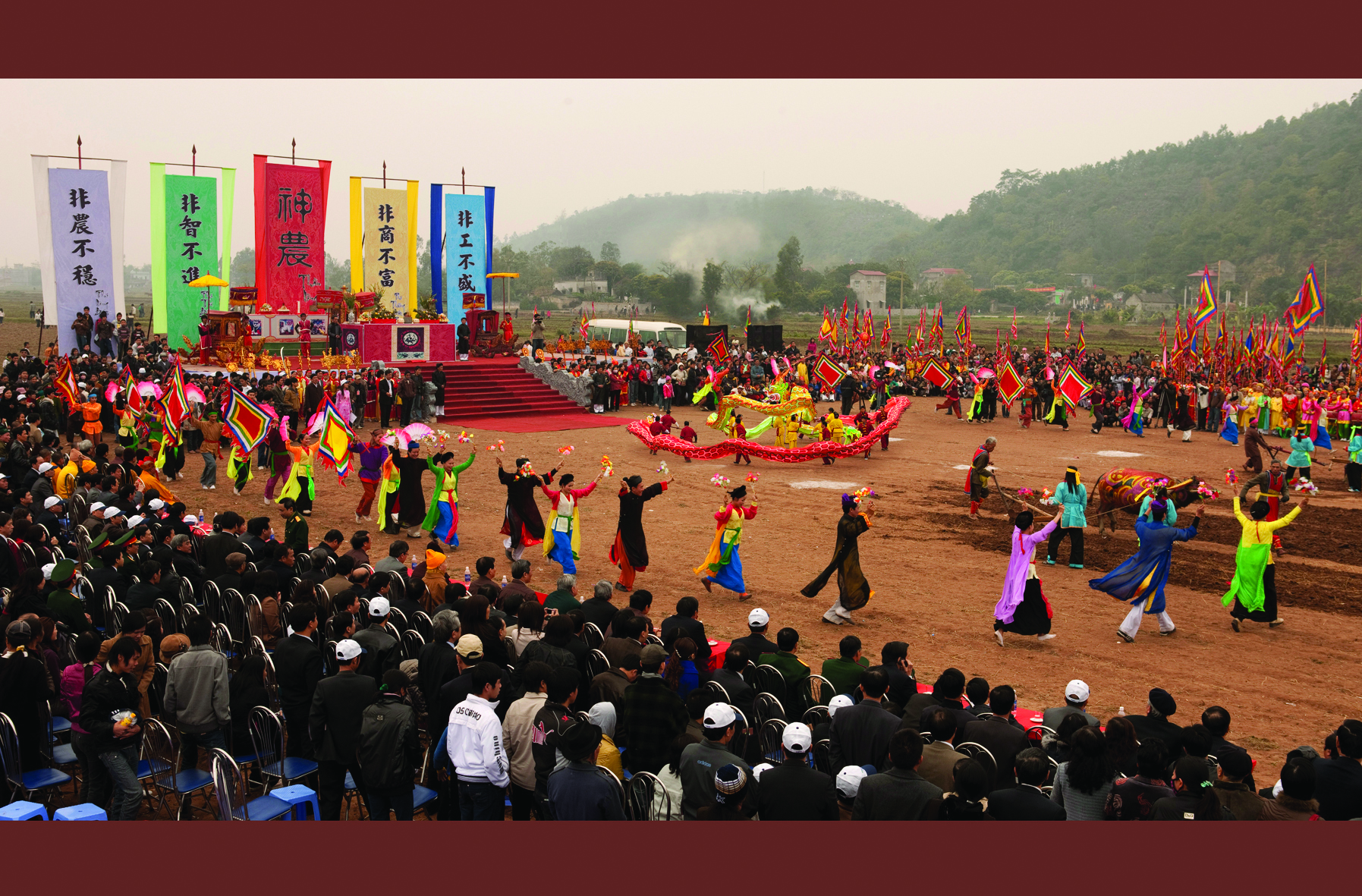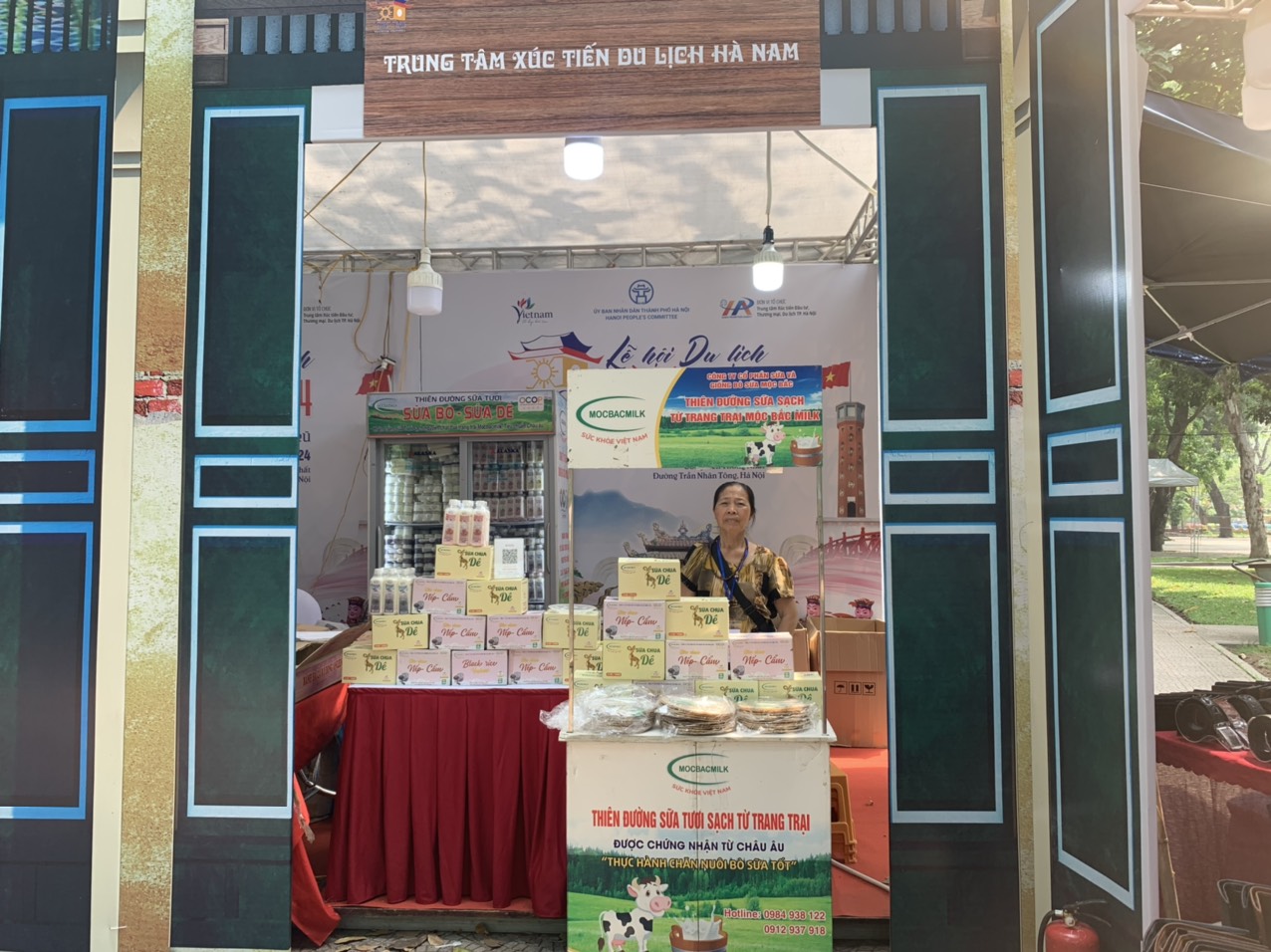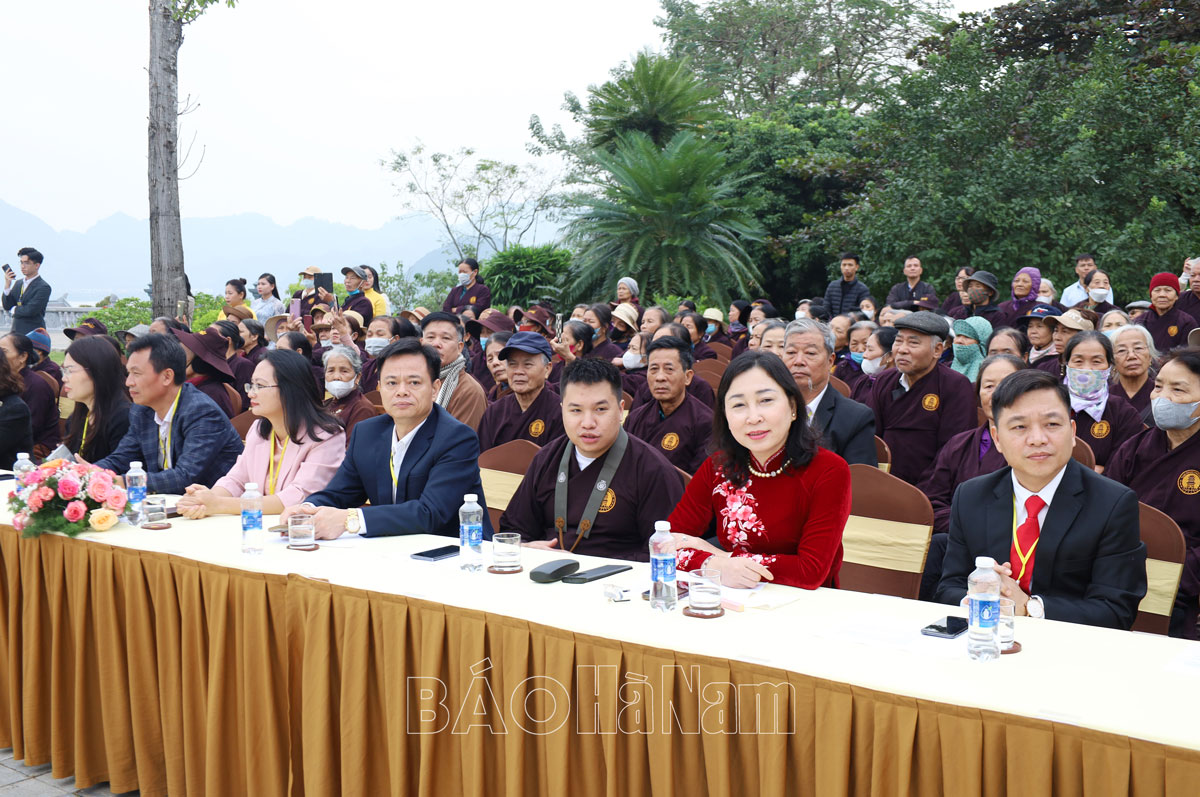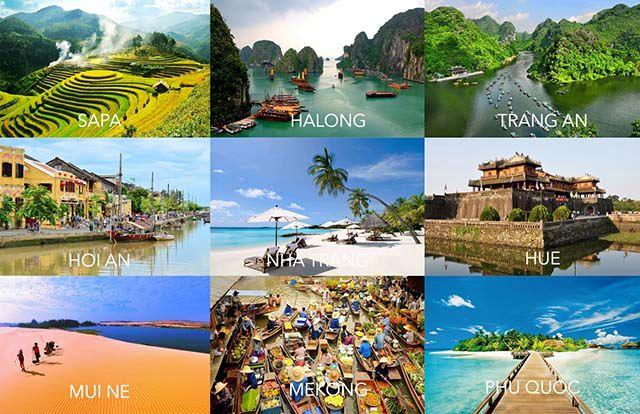
Over ten thousand years ago, in the Neolithic era, primitive people were present in Ha Nam, the earliest in the Red River Delta. Archaeological discoveries in Chuong cave, Giong Lo cave (Thanh Nghi commune, Thanh Liem) and Ba Sao ward (Kim Bang town) have revealed many relics and bones of ancient people. At that time, people lived in caves, under stone roofs; their main source of living was hunting and gathering, although they knew how to grow crops, it was still primitive...
Sketch of Ha Nam culture
Entering the Bronze Age, with the excavation of dozens of boat-shaped coffins in Moc Hoan, Tien Son communes, Yen Bac ward (Duy Tien town) and Chau Son ward (Phu Ly city), it proved the new settlement method of people, living on high land strips formed by alluvium of the Red River, Day River and Chau River.
Having people means having culture. In Ha Nam land, the beginning is the cave culture along the limestone mountain range of Thanh Liem, Kim Bang. From a geo-cultural perspective, Ha Nam culture in its long history can be considered as the unity in diversity of two components: the culture of the plains in the East and the culture of the mountainous areas in the West.
Tich Dien Doi Son Festival 2024. Photo: Le Dung
Over a long period of history, generations have continuously created, passed down, enriched, and spread the culture of this land, which both has the common characteristics of Vietnamese and Red River Delta culture and has its own unique, distinctive, and unmistakable features, creating the cultural identity of Ha Nam.
In the province, there are currently 1,784 relics (551 communal houses, 490 pagodas, 306 temples, the rest are shrines, temples, and ancestral halls). There are 97 relics ranked by the State as National Relics, including two Special National Relics, 146 provincial relics. The number of relics and antiquities in relics and houses is so large that it is difficult to inventory them all. Ha Nam has discovered 20 Dong Son bronze drums, the most in the Northern Delta region.
Ha Nam currently has more than 100 festivals, of which 6 are regional festivals, the rest are village festivals. Festivals in Ha Nam are of all types: historical festivals, agricultural festivals, religious festivals, cultural festivals... Overall, both the ritual and the festival parts of each festival have their own characteristics.
Folk songs, folk dances and other folk art genres in Ha Nam are very rich and diverse. Regarding folk songs, there are ritual folk songs and daily folk songs of Ha Nam. At the same time, folk songs from other regions are also circulated in Ha Nam.
Ha Nam is also a land of many crafts such as: weaving, embroidery, wood, stone, horn handicrafts, carpentry, food processing, fish fry collection, fish breeding... and has famous craft villages in the country.
Folk sports, ethnic groups, and specialties in Ha Nam are also rich and well-known, contributing to highlighting the cultural identity of this land.
Ha Nam has a rich treasure of intangible cultural heritage. To date, 14 heritages have been listed as National Intangible Cultural Heritage, including festivals, folk songs, traditional crafts, and folk performing arts.
Culture of districts, cities and towns
Phu Ly City
As the provincial capital of Ha Nam province, the city has cultural relics and sites that increasingly attract the attention of researchers and tourists.
In Lam Ha ward, the anti-aircraft artillery site, located in Dinh Trang village, has been ranked as a national monument by the State. In the open space, next to a large lake, there are works, monuments, and temples that create a complex that is both solemn and artistically attractive. These are the Provincial Martyrs Temple, Uncle Ho and the Heroic Martyrs, the Memorial House of Comrade Luong Khanh Thien, the Temple and Monument of 10 Lam Ha female militia martyrs, the square, ornamental trees, lawns, etc.
Dinh Trang historical and cultural relic site (Lam Ha, Phu Ly). Photo: The Trang
Historical records show that in 1069, Grand Chancellor Ly Thuong Kiet went to punish Champa by water, following the Day River, passing through Ha Nam. The city has two relics, both worshiping Ly Thuong Kiet, on the banks of the Day River. In Chau Son ward is Thinh Chau Ha communal house. In Thanh Tuyen ward is An Xa communal house. Both communal houses are national relics.
Regarding the Confucian examination system under feudalism, currently at Phu Thu communal house (Tan Hiep ward) there is still a stone stele engraved with the name of Nguyen Quoc Hieu, the highest-ranking scholar in Ha Nam province.
In village 2, Phu Van commune, the village temple still preserves a very valuable copy of the Divine Legend, providing rare documents about ancient Taoism in Ha Nam.
Dinh Xa commune is a prominent locality in cultural heritage. There are three communal houses ranked by the State as National Monuments, namely Chieng communal house, Dinh communal house, Tai Kenh communal house; Tai Kenh pagoda and Pham communal house are ranked as provincial monuments. The stone stele "Ngo gia thi bi" at Giau pagoda has been recognized by the State as a National Treasure. The stele is especially rare, with the stele year: Dai Tri year 8 (1366) of King Tran Du Tong's reign, and is the only remaining Tran Dynasty stele in Ha Nam. The outstanding value of the stele is the addition of the name Lo Loi Nhan that was omitted from the old Tran history books, and the relief of the portrait of a man on the front of the stele is unique not only in Ha Nam but also in the whole country. The Tran Dynasty antique has a model of a house and a gate made of terracotta discovered in the ground of a field in Tai Kenh village. This antique has high historical and artistic value and is currently on display at the Ha Nam Provincial Museum.
Phu Ly spring rolls, Dam tofu (Tan Liem ward), and Tai vermicelli (Dinh Xa commune), culinary specialties of the city, have long been known far and wide.
Duy Tien Town
Every year, on the occasion of Lunar New Year, tourists flock to the old Doi Son commune (now Tien Son commune) to attend the Doi Son Tich Dien Festival. The festival opens for 3 days, January 5-7 of the lunar calendar, to recreate the historical event of Emperor Le Dai Hanh (Le Hoan) plowing the Tich Dien at the foot of Doi mountain (at that time called Long Linh) in the year Dinh Hoi (987). The mountain was greatly sanctified under the reign of King Ly Nhan Tong, when the king changed the mountain's name to Long Doi Son (Dragon Team Mountain), and ordered the construction of a pagoda and tower on the mountain, inaugurated in 1122. Through the ups and downs of history, the pagoda and tower of the Ly Dynasty no longer exist, leaving only the stone stele of the Sung Thien Dien Linh Tower, 6 Kim Cuong stone statues, a Kinari (human head, bird body) stone statue, a terracotta dancer-shaped slab... The current pagoda is an architectural work of the Nguyen Dynasty, preserving many valuable antiques, especially a large bronze statue of Buddha Maitreya, cast in 1864. The Doi Pagoda Festival, held annually from the 19th to the 21st of the third lunar month, is a regional festival; the ceremony and the festival both have unique features. On Doi Mountain, there remain on the northwest slope of the mountain 4 steles of the Van Tu of Duy Tien District, dating from the Nguyen Dynasty. The stone stele provides the names of scholars and sages in the feudal period of Duy Tien district. Also in Doi mountain, a Heg IV Dong Son bronze drum was discovered (the only one in Ha Nam) and is currently on display at the National History Museum. With its high and unique value, Doi Son pagoda has been ranked by the State as a special national monument, and the Doi pagoda festival has been listed as a national intangible cultural heritage. The Sung Thien Dien Linh stele is a national treasure.
Doi Tam drum village, old Doi Son commune, is famous throughout the country, established since the Ly dynasty, during the Tran dynasty, Doi Tam people went to Thang Long capital, established a drum making guild, today still preserves the place names Hang Trong ward, Hang Trong street, Hang Trong alley (Hoan Kiem district, Hanoi). The unique and special buffalo skin drum making craft of Doi Tam villagers has become a national intangible cultural heritage.
The old Moc Nam commune (now Moc Hoan) is a locality of Duy Tien town, famous for its national-level cultural heritage and relics. Lanh Giang Temple has been ranked at the national level by the State. The Chau Van ritual is regularly practiced at the temple, and is a typical temple for the presence of this ritual, which, along with the Chau Van ritual at other temples in the province, has been listed as a National Intangible Cultural Heritage. The Lanh Giang Temple Festival is held twice a year in the 6th and 8th lunar months with unique rituals and games, which have also been listed as a National Intangible Cultural Heritage. In addition, the traditional silk weaving village of Nha Xa is famous for its silk products comparable to Van Phuc silk, Ha Dong (Hanoi). Now the silk weaving profession of this village has been listed as a National Intangible Cultural Heritage. Not only Nha Xa silk, Duy Tien also has silk from two villages Quan Pho and Tu Dai (Chuyen Ngoai commune) which are very suitable for painting and are favored by many silk painters.
The culture of the town is also remembered by relics, antiques, festivals, and folk songs in other localities. Lung Xuyen Communal House (Yen Bac Ward), a national historical relic, is a highlight in the revolutionary history of Ha Nam. Tien Noi bronze drum (discovered in Tri village) is a national treasure. The stone stele of Dinh hamlet (Tuong Thuy village, Trac Van commune) proves the place where the Censorate of Tran Son Nam was located during the Later Le Dynasty on the right bank of the Red River in today's Ha Nam.
An Mong village (formerly Mong village), old Tien Phong commune (now Tien Son commune) has a stone communal house worshiping Nguyet Nga, the female general of Hai Ba Trung. The communal house has been ranked by the State as a National Monument. Mong village festival opens from the 6th to the 8th of the first lunar month with a unique ball wrestling game. Mong village, together with villages at the Chau river junction of old Ngo Khe commune (now Binh Nghia commune, Binh Luc district), Van Ly (Ly Nhan) have created folk songs (a genre of folk songs) with a lyrical character.
Along with the two craft villages of Doi Tam buffalo skin drum making and Nha Xa silk weaving, Ngoc Dong rattan weaving village is also quite famous. During his lifetime, Uncle Ho used a set of rattan tables and chairs given by the village to work.
Kim Bang Town
Along with Duy Tien town and Binh Luc district, Kim Bang is also a locality with strong traces of Dong Son culture with 5 bronze drums discovered. The custom of worshiping the Four Dharmas (Van Phap, Vu Phap, Loi Phap, Dien Phap) in Ha Nam province is concentrated in Kim Bang town with many worship relics, including ranked relics such as Que Lam pagoda (Que ward), a national relic, Ba Giat temple (Phuong Thuong residential group, Le Ho ward), a provincial relic.
Water procession ceremony in Tam Chuc Spring Festival (Kim Bang) 2024. Photo: Giang Nam
Kim Bang has a pair of national relics, almost opposite each other across the Day River. On the left bank is Ba Danh Pagoda - Ngoc Mountain. Ba Danh Pagoda is a "Buddha in front, Saint in back" pagoda, meaning that in front is the Buddha hall worshiping Buddha and Bodhisattva like other pagodas, but in the back palace worships Phap Phong. This is a god outside of the Four Dharmas but is related, this unique feature of the pagoda is "unique, one of a kind". Ba Danh Pagoda - Ngoc Mountain has been ranked by the State as a National Relic. Ba Danh Pagoda Festival is held on 16-17 February of the lunar calendar, has its own unique features, and has also been listed as a National Intangible Cultural Heritage. On the right bank is Truc Temple - Ngu Dong Thi Son (Quyen Son residential group, Thi Son ward). Truc Temple worshiping Thai Uy Ly Thuong Kiet is a National Relic. In addition to the procession, sacrifices, and entertainment rituals, the Truc Temple Festival also includes Dam singing, a unique and distinctive ritual folk song that has been recognized as a National Intangible Cultural Heritage.
Kim Bang town is also a locality in Ha Nam province with a Complex of Monuments and Scenic Spots (Ba Sao ward) that has been ranked at the national level by the State, including archaeological sites, architectural sites, mountains and a large Luc Nhac lake. Tam Chuc Pagoda (newly built) is the largest in Vietnam, in 2019 the pagoda solemnly held the United Nations Vesak Festival. Tam Chuc Pagoda Festival opens on the 12th day of the first lunar month, attracting a large number of participants.
The national tourist area (the core area is Tam Chuc Monuments and Scenic Area) located in Ba Sao ward and Kha Phong commune is an attractive destination for domestic and foreign tourists.
Kim Bang culture also has temples, pagodas, and other notable intangible cultural heritages.
In Thanh Son commune, the Le Chan temple worshiping the female general of the Trung sisters has been ranked by the State as a National Monument. In Suoi Be valley, there are 3 Ma Nhai steles (carved directly on natural stone blocks), dated 1672 and 1673, providing valuable information about Le Chan. Dang Xa pagoda (Van Xa commune) still has a stone altar, created in the year of Mau Ty (1708), a unique and special antique, both used to place worship objects and as a stele.
Quyet Thanh Pottery, absorbing the quintessence of two traditional pottery kilns Que and Danh Xa, has created a product line with its own unique characteristics that is favored by domestic and foreign markets.
Phuong Lam wrestling camp (Dong Hoa ward), one of the four oldest ethnic wrestling camps in Ha Nam province, regularly has wrestlers participating in wrestling tournaments organized by the province.
Binh Luc District
Nearly 90 years ago, the book “Geography of Binh Luc District” by District Chief Ngo Vi Lien was published, starting with “Binh Luc Phong Tho Song” by Mr. Vu Dang Tien, composed in 1900, introducing 67 communes of Binh Luc district with two opening lines: Binh Luc is the central region/For thousands of years, the air is prosperous, the mountains and rivers are magical. This is the first district geography book of Ha Nam province.
The ancient bronze drum of the famous Dong Son culture was also discovered in Binh Luc district. That is the Ngoc Lu I bronze drum, the oldest, with the richest patterns, the most typical of the Dong Son bronze drum line. The drum has been recognized as a National Treasure, a 1/1 scale version of the drum is placed at the United Nations headquarters. In Binh Luc district, 6 more Dong Son bronze drums were discovered, of which the Vu Ban bronze drum has been scientifically documented and proposed to the State for recognition as a National Treasure.
The first version of the Ngoc Lu Bronze Drum is kept at the village communal house and is a treasure and pride of the people of Chu village (Ngoc Lu, Binh Luc). Photo: Chu Uyen
During his lifetime, President Ho Chi Minh visited Ha Nam twice. The second time, after attending the conference to summarize the province's drought prevention, on the morning of January 14, 1958, Uncle Ho went to the construction site of Cat Tuong dam, blocking the Sat river to save rice. The location where President Ho Chi Minh talked with cadres and people to build the dam has been ranked as a national historical relic. In this area, many items have been built to commemorate the event and commemorate Uncle Ho. The relic and construction works belong to Binh My town. An Thai village in the town is an ancient village, famous for its communal house and pagoda relics. An Thai communal house has been ranked as a national relic. An Thai communal house festival is a regional festival, held from the 9th to the 11th of the second lunar month, unique with palanquin processions, human chess matches, and wrestling to present to the Saints. An Thai pagoda preserves an ancient stone stele, stating that during the Tay Son period, to avoid the taboo name Binh of Nguyen Hue when he was young, Binh Luc district had to be changed to Ninh Luc district. An Thai village still has a long-standing traditional oriental medicine profession with traditional healers specializing in treating infertility.
In Ngoc Lu commune, in addition to the Ngoc Lu I bronze drum, two more Dong Son bronze drums were discovered. Ngoc Lu communal house and pagoda have been ranked as national relics. The Chu market stele, dated 1681, is the only market stele still existing in Ha Nam province, the name Vietnam appears twice on this stele. Next to Ngoc Lu commune is Bo De commune, where Trieu Hoi communal house is located, a national relic. On October 20, 1930, at the communal house yard, the Ha Nam Provincial Party Committee organized a demonstration and march against colonialism and feudalism by farmers from communes in the area. The event resonated throughout the country and was mentioned in the report of leader Nguyen Ai Quoc sent to the International Peasants' Conference on November 5, 1931.
Vu Ban commune is adjacent to Ngoc Lu commune, in addition to the Vu Ban drum, another Dong Son bronze drum was discovered, named Vu Bi drum. The rare and unique stone bell of Dieu pagoda (Dong Tu village) has been scientifically documented and proposed for recognition as a National Treasure. Ca communal house in Trung village has been ranked as a National Monument, located in the center of Quac Huong Thai ap of the Tran Dynasty of Grand Tutor Tran Thu Do. Voc wine is said to have been created during the Tran Dynasty and is now a famous brand. Vu Bi wrestling furnace, one of the four traditional and ethnic wrestling furnaces of Ha Nam province.
Trung Luong commune has 4 national relics, 2 of which are in Vi Ha village (Va Ha), the hometown of the great poet Nguyen Khuyen. Nguyen Khuyen's ancestral temple still preserves many precious relics of the poet - Tam Nguyen Yen Do. Vi Ha communal house has a typical architectural style of the Later Le period, with many unique and distinctive folk carvings.
An Lao Commune, the southernmost point of Binh Luc District with Que Mountain and Ninh River. Que Mountain is also known as Nguyet Hang Son or An Lao Mountain. On the top of the mountain is a Ly Dynasty pagoda carved into the cliff. On the southeastern slope of the mountain, a Dong Son Bronze Drum was discovered, dating back to the Ngoc Lu I Drum. The Do Hai fine art horn craft village is famous far and wide.
Binh Luc also has the character "Trang Lon" - a folk mandarin. Mr. Trang was from Manh Chu village (An Do commune) and appeared during the Le Trung Hung period. He did not pass the Trang Nguyen exam but his contemporaries, including the king and mandarins, admired him.
Ly Nhan District
The district's territory is surrounded by rivers on all four sides, by the Red River and the Chau River. This is a unique natural feature of Ly Nhan district. Ly Nhan's own Long Xuyen River is a historical, cultural, and feng shui river.
Dai Hoang Royal Banana (Hoa Hau, Ly Nhan). Photo: The Tuan
Ly Nhan cultural heritage is rich and diverse in both tangible and intangible culture.
Tran Thuong Temple (Tran Hung Dao Commune), a special national relic, worships Hung Dao Dai Vuong Tran Quoc Tuan, his family and generals. At the temple, the annual salary distribution ceremony of Duc Thanh Tran takes place on the night of the 14th day of the first lunar month, and at the hour of Ty, the salary distribution continues until the next day. Tran Thuong Temple Festival is held from the 19th to the 21st day of the 8th lunar month, the main festival is on the 20th day to commemorate the death of Hung Dao Dai Vuong in 1300. The festival with its unique rituals and folk games has been honored as a National Intangible Cultural Heritage.
Vinh Tru town, located the ancient communal house, National Monument and the literary monument of the time of Mr. Nghe (Doctor) Vu Van Ly, teacher of Nguyen Thang (later changed to Nguyen Khuyen).
Duc Ly commune is adjacent to Vinh Tru town, in this commune there is Van Xa communal house, a national relic dating back to the Mac Dynasty, the earliest among the communal houses in Ha Nam province. The national relic complex of Te Xuyen communal house and pagoda attracts attention because the pagoda still preserves a valuable collection of wooden blocks for printing Buddhist scriptures. Ngo communal house - a national relic famous for its Cheo mats in the communal house yard (Ngo village Cheo mats).
Bac Ly commune has outstanding relics. Chuong Luong communal house - a national relic worshiping the founder of dry puppetry, Van Chat, the Eighteen Nations of Oi Loi Ton Than, the communal house festival has a very unique dance of 18 puppets. Noi Chuoi communal house is a provincial relic, in the communal house festival there is Lai Len singing and dancing. Lai Len singing (also known as La Le singing) consists of 20 melodies with very ancient lyrics, which have been recorded in the list of national intangible cultural heritage. In Van An village, this commune still preserves a bronze book called "Kham ban dong bai", dated 1472, the oldest of the 8 bronze books remaining in Vietnam.
Chan Ly commune is famous for Ba Vu temple (the daughter of Nam Xuong in ancient books) which has been ranked as a National Monument. Ba Vu temple festival (Ba Vu Thi Thiet) opens for 3 days from 18th to 20th of the 8th lunar month and has also been listed as a National Intangible Cultural Heritage. Dao Ly commune also has a unique palanquin. The large palanquin is decorated with rich patterns of the Later Le Dynasty, requiring 16 people to carry it. The palanquin is a unique antique of Tho Chuong communal house - a National Monument.
Dai Hoang village (Hoa Hau commune), the hometown of writer and martyr Nam Cao, has many relics of the writer who was posthumously awarded the Ho Chi Minh Prize, the most prestigious award in literature and art, in the first batch (1996). The relics are the tomb, documents, and artifacts displayed in the Nam Cao Memorial House, Ba Kien House, the prototype of the character in the short story "Chi Pheo". Not only that, Dai Hoang village also has a long-standing handicraft weaving craft, braised fish in clay pots, especially delicious and precious Royal bananas, which were used to pay tribute to the king in the past. Along with Royal bananas, Ly Nhan's culinary culture, which is popular far and wide, also includes Van Ly rice tangerines, Cheu village rice paper (Nguyen Ly commune), Trac Noi and Tran Thuong lotus seeds (Tran Hung Dao commune).
It would be a mistake not to mention Hop Ly commune, famous for its Phuc Chau traditional wrestling furnace, which has provided the country's national sports with a champion and more than a dozen first-class wrestlers. This place also has Phuc Thuong wine, strong and smooth, brewed using a traditional method that is as famous as Voc wine (Binh Luc) and Beo wine (Duy Tien).
Thanh Liem District
If you want to learn more about Emperor Le Dai Hanh (Le Hoan), the pioneer at the foot of Doi mountain, the beautiful custom of promoting agriculture in the history of Vietnamese culture, let's go to Liem Can commune (Thanh Liem).
Bao Thai commune in the past, Liem Can today, was the hometown of Le Hoan and the brave general of the Tran Dynasty - Tran Binh Trong. There are still places and vestiges related to the period when Le Hoan established a military training base, helping Dinh Bo Linh suppress the rebellion of 12 warlords. Lang Temple, a relic ranked at the national level by the State, is located on the mountain of the old base. The temple worships Emperor Le Dai Hanh (Le Hoan), and worships eight Emperors (sons of Le Hoan), and the Three Great Kings (generals of Le Hoan). In addition to Lang Temple, Ung Liem communal house (Thanh Ha commune) also worships Le Hoan, Cam Du communal house (Tan Thanh town) worships Nhu Hoang De, a general of Le Hoan. The two communal houses are also national relics. On Coi mountain (Coi village, Liem Can), there is the tomb of Le Loc (also known as Mo Ho Tang, Ma Dau), the grandfather of Le Hoan. Liem Can commune still has a very precious lotus stone altar (dated 1364 under the Tran Dynasty) at Long Hoa pagoda. This commune is also famous for its craft of making ornamental rocks and rockeries.
Lieu Doi wrestling festival (Liem Tuc, Thanh Liem). Photo: Ngoc Diep
Liem Tuc commune and neighboring communes form a cultural treasure of Lieu Doi, rich in folk architectural relics, proverbs, idioms, folk songs, folk tales, especially the system of classics, military strategies, anonymous poetic stories about Le Hoan and related events and characters up to 8,878 six-eight verses. Dong Cau Communal House - a national relic in the center of Lieu Doi ancient commune, nearby is the wrestling arena of the famous Lieu Doi Traditional Wrestling Furnace. Lieu Doi wrestling festival has been listed as a national intangible cultural heritage, unique with "Nam Keo Trai Rot" festival taking place from the 4th day of the first lunar month.
An Hoa and Hoa Ngai villages have a long-standing lace embroidery craft, with sophisticated products that are popular in the market. The lace embroidery craft of the two villages has become a national intangible cultural heritage. An Hoa and Hoa Ngai communal houses, imbued with the architecture and art of the Later Le Dynasty, have also been ranked by the State as national relics.
Liem Thuan commune has long had the custom of singing Trong Quan both on land and on boats, mainly in the three villages of Chay, Song, and Gung, and later spread to many places. At the Chay communal house area - a national relic, every year on the full moon of the eighth lunar month, villagers simultaneously organize Trong Quan singing both on land and on boats in the communal house pond. Ha Nam Trong Quan singing (mainly in Liem Thuan commune) has been listed as a national intangible cultural heritage. Also in Liem Thuan commune, the Gua village festival, which opens on the fourth day of the first lunar month, has a very unique and attractive bridge-capturing game.
Regarding culinary culture, Thanh Liem has Kien Khe sesame rice paper which is sold in many places and is popular with many people.
The culture of the 6 districts, cities and towns of Ha Nam province is very rich, diverse, and unique, difficult to describe in detail. This is just a brief sketch, certainly not complete, in order to add pride to the land of "Doi Mountain - Chau River", with a long-standing cultural tradition that has been and is being continued/spread more and more deeply.
Source: baohanam.com.vn
